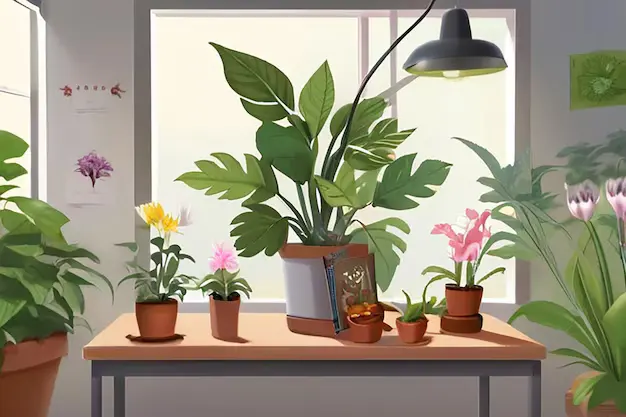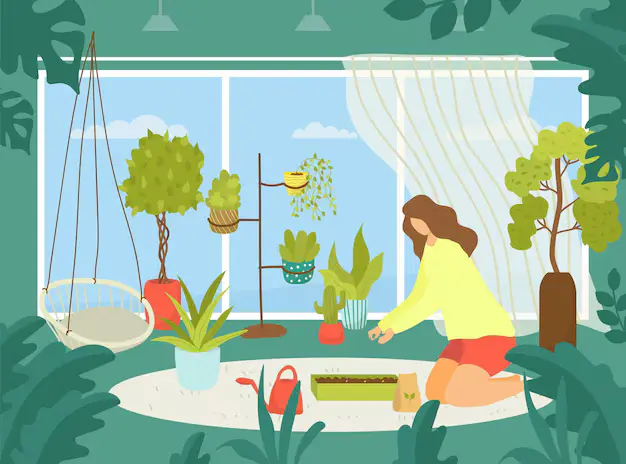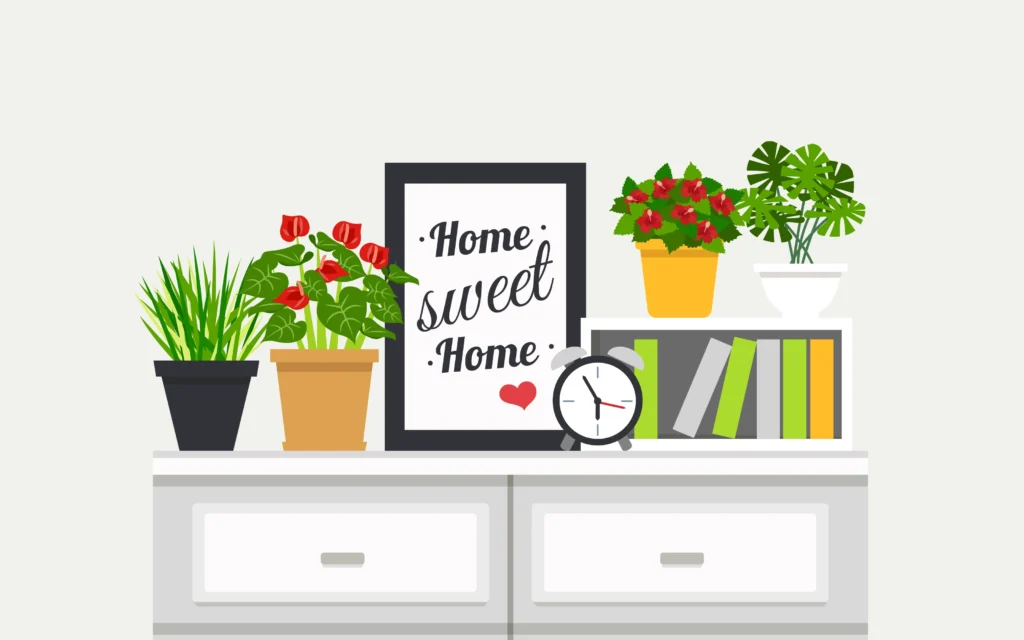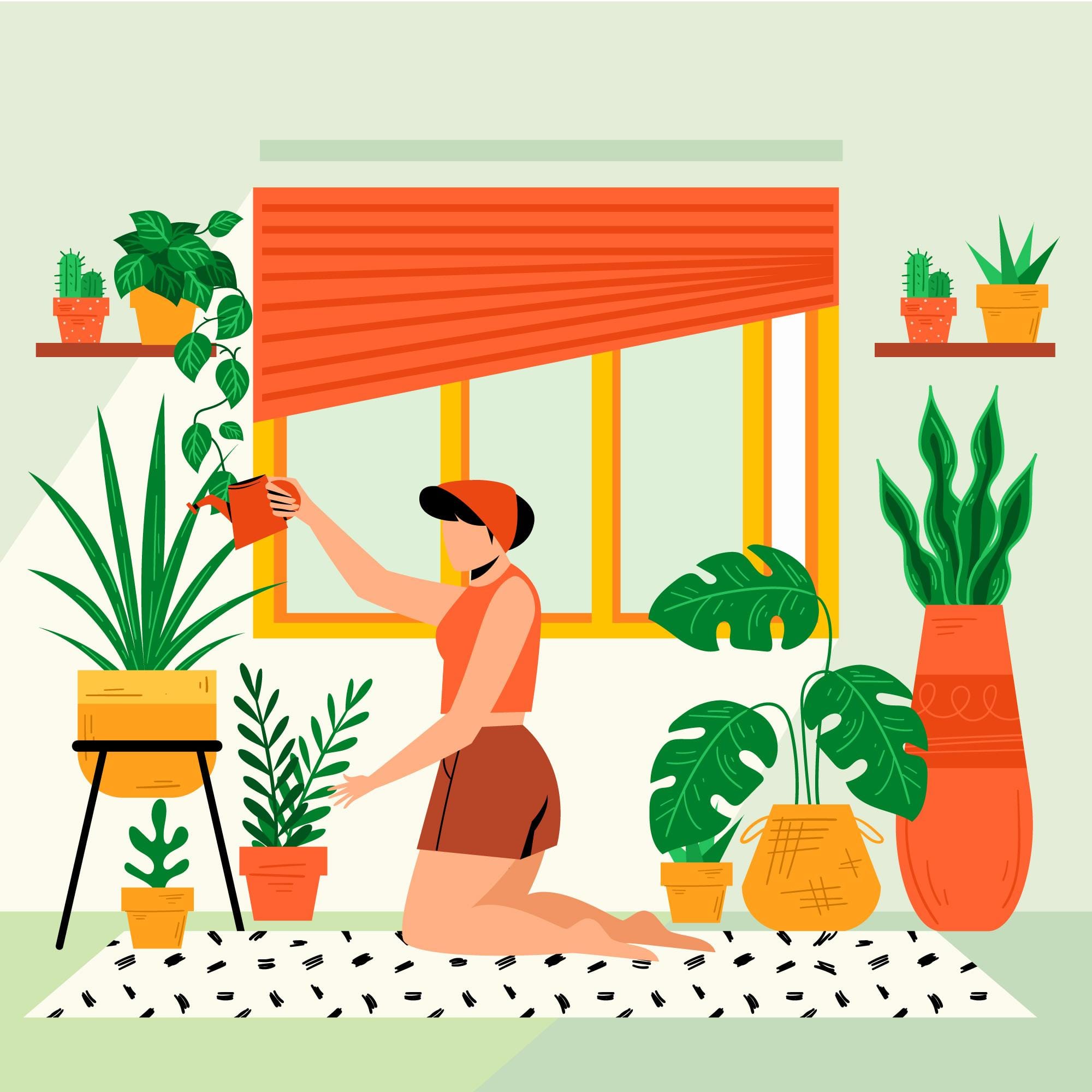Introduction
Artificial flowers and plants are the favorite choice for many homeowners as they bring lasting beauty to your space and adds effortless grace to your home decor. With our expert cleaning insights, we know how to keep these decorative pieces looking fresh and vibrant year-round. From a cheerful bouquet on the coffee table to a vibrancy in the hallway or kitchen, these artificial flowers and plants bring charm and enhance elegance of your home.
However, if they are not cleaned properly, they might collect dust and dirt over time. As working in the cleaning industry, we believe that even small details like regularly cleaning with a microfiber cloth, spot-cleaning with a damp cloth or mild soap, and deep-cleaning with lukewarm soapy water can make a big difference in cleaning your artificial flowers and plants.
Whether you’re living in Langley or anywhere across Lower Mainland and Fraser Valley, artificial flowers or plants can make any home vibrant and inviting.
In this guide, we will walk you through in detail how to clean artificial flowers and plants of your home, including what methods to use, what to avoid, and how to keep them looking as good as new and graceful.
Why Cleaning Artificial Flowers and Plants Matters

Artificial flowers and plants are loved for their low maintenance and long-lasting beauty, but that doesn’t mean they don’t need maintenance. Over time, dust, pet dander, and even cooking residues can build up on them, making once-vibrant arrangements look dull or obviously fake. That’s why a little upkeep goes a long way.
Here’s why cleaning your artificial flowers and plants is worth the effort:
- Keeps them looking natural: Dust is the biggest hint that flowers aren’t real. Regular cleaning restores their appearance, so guests admire their beauty instead of spotting the dust on them.
- Reduces allergens at home: According to the Asthma Society of Canada, dust is one of the most common indoor allergy triggers. Artificial plants can trap these particles, so cleaning them helps keep your air healthier.
- Prevents Fading: Proper care prevents fading, discoloration, and material breakdown, helping your artificial flowers and plants last for years.
- Enhances your home’s freshness: Clean flowers brighten a room, while dusty ones may give your home a dull look. A quick clean keeps your home looking polished, even if life gets busy.
Regularly cleaning your artificial flowers and plants is about keeping up with the fresh vibe of your home.
How to Clean Artificial Flowers and Plants: Tools and Methods to Clean
You don’t need fancy tools to keep your artificial flowers and plants looking fresh. Few everyday items you should keep are:
- Soft microfiber cloths
- Feather duster or soft brush
- Mild dish soap
- Spray bottle with water
- White vinegar (for deeper cleaning)
- Hairdryer on cool setting
- Cotton swabs (for intricate parts and crevices)
Tip: Keep these supplies with you. Having them handy makes cleaning quick.
Methods for Cleaning Artificial Flowers and Plants
1. Dusting for Regular Maintenance
For everyday upkeep, dusting is the simplest and most effective method.
- Use a feather duster or microfiber cloth to wipe leaves and petals.
- For hard-to-reach spots, try a clean makeup brush or small paintbrush.
- Make this a weekly habit to avoid heavy buildup.
If you want them to stay cleaner longer? Place artificial plants away from vents, and open windows.
2. Vacuum with a Brush Attachment
For larger or floor plants. You should:
- Use a vacuum cleaner with a soft brush attachment.
- Set it to a low suction mode to avoid damage.
- Use the brush gently over leaves and stems.
This method is a huge time-saver for big artificial plants.
3. Wiping with a Damp Cloth
When dusting isn’t enough. Go for:
- Lightly dampen a microfiber cloth with plain water.
- Wipe each leaf, petal, and stem.
- Allow the plant to air dry fully to prevent musty smells.
It is best for silk flowers and fabric-based designs that need a gentle refresh.
4. Soap and Water Wash
For artificial flowers and plants that are very dirty:
- Fill a bucket with lukewarm water.
- Add a few drops of mild dish soap.
- Submerge sturdy artificial flowers or small plants.
- Swish gently, rinse well, and let air dry.
You should avoid soaking delicate flowers or glued parts, water can loosen adhesives.
5. Vinegar Spray for Deep Cleaning
This is perfect for removing grime or odors:
- Mix equal parts white vinegar and water in a spray bottle.
- Lightly mist the plant.
- Wipe clean with a soft cloth.
This method is both eco-friendly and leaves your flowers and plants smelling fresh.
6. Compressed Air for Intricate Designs
Some artificial plants like orchids or succulents have lots of detail.
- Use compressed air to blow dust from crevices.
- Hold the can at a safe distance to avoid damaging delicate parts.
It is great for designs where a cloth just can’t reach.
7. Hairdryer Method
A hairdryer works well to blow away the dust.
- Set it to the cool setting.
- Hold it 10–12 inches away.
- Blow away dust gently.
It is quick, safe, and easy for routine house cleaning.
With these simple methods, you can keep your artificial flowers and plants looking vibrant all time without spending hours on upkeep.
Types of Artificial Flowers and Plants
Artificial flowers and plants come in a variety of materials, each with its own look, feel, and maintenance needs. Understanding the differences can help you choose pieces that suit your home décor and cleaning routine.
Silk Plants
These are made from high-quality silk or synthetic silk fibers. Silk flowers are pricey for their realistic look and soft texture.
- Ease of Cleaning: These plants need to dust gently with a feather duster or microfiber cloth; avoid soaking as water can damage the fabric or loosen glue.
- Pros: They have soft petals that mimic real flowers beautifully.
- Cons: These can be delicate; prone to fading if exposed to sunlight for long periods.
Plastic Plants
These are durable plants that are made entirely from plastic, often used for leaves, stems, or entire arrangements.
- Ease of Cleaning: They are easy to clean. Plastic plants can have soap-and-water washes and even occasional rinsing.
- Pros: These are highly durable, fade-resistant, and require low-maintenance.
- Cons: They are less natural-looking; can appear shiny or stiff.
Polyester Plants
These plants are fabric-based plants similar to silk but generally less expensive.
- Ease of Cleaning: They need a little more care like you need to dust regularly and wipe gently with a damp cloth. Avoid soaking to prevent adhesives from loosening.
- Pros: No doubt, these are affordable, lightweight, and widely available.
- Cons: However they are less realistic than silk; colors may fade faster over time.
Latex Plants
These are made from latex-coated fabric or rubber, these plants have flexible leaves and lifelike textures.
- Ease of Cleaning: They are easy to wipe with a damp cloth; durable enough for occasional deeper cleaning.
- Pros: They have a very realistic appearance and texture; resistant to dust and minor wear.
- Cons: These are more expensive; latex can degrade over time if exposed to direct sunlight.
Quick Tip: If you want low-maintenance, plastic or latex plants are best for you. For a realistic look that gives you a tone of fresh flowers, silk plants are ideal, but they require more gentle care.
What to Avoid When Cleaning Artificial Plants
Just like real plants, faux greenery needs gentle care. While cleaning is simple, the wrong approach can shorten their lifespan or leave them looking worn. Here we recommend these common mistakes to avoid:
Hot Water or Harsh Chemicals
Using bleach, ammonia, or very hot water may strip away color and damage delicate fabrics or plastics. Always choose mild dish soap, vinegar solutions, or plain water for safe cleaning.
Soaking Delicate Flowers
You may find it easy to dunk artificial flowers in water, but soaking can loosen adhesives, warp stems, or cause dyes to bleed. Only submerge sturdy plastic plants—for silk or fabric flowers, use spot cleaning or gentle dusting instead.
Abrasive Sponges or Brushes
Steel wool, rough scrubbing pads, or stiff brushes can scratch surfaces or fray fabric petals. Instead, choose microfiber cloths, feather dusters, or soft brushes for safe and effective cleaning.
Direct Sunlight Drying
Leaving artificial plants in direct sun to dry might speed things up, but it also risks fading. Always let them air dry indoors in a shaded, well-ventilated area.
Pro Tip: Treat your artificial plants the same way you’d treat delicate fabrics. They need gentle cleaning to preserve their beauty that extends their life.
Seasonal and Deep Cleaning Routine for Artificial Plants
Artificial flowers and plants are not similar to real ones, but they still need a regular schedule of care to look their best. By breaking down cleaning into weekly, monthly, and seasonal tasks, you can keep them vibrant and fresh all year long.
Weekly Care – Quick Dust Control
- Use a feather duster or microfiber cloth to sweep away surface dust.
- For small crevices, grab a clean makeup brush or a handheld vacuum on low suction.
- This takes just a few minutes but prevents buildup that can make plants look dull and tired.
Monthly Refresh – Restoring Freshness
- Wipe leaves, stems, and petals with a lightly damp microfiber cloth.
- For a natural deodorizer and deeper clean, mist the plant with a vinegar-and-water spray and wipe gently.
- Allow everything to air dry fully before putting plants back in place.
This step revives the look of your silk flowers, fabric petals, that collect dust more quickly.
Seasonal Deep Clean – Renew and Protect
Every 3–4 months, take time to give your artificial plants a more detailed refresh:
- Soap-and-water wash: Drop your plants in lukewarm soapy water, swish gently, rinse, and let them air dry. If you have delicate silk or glued plants, do not use this step.
- Reposition for protection: Move your plants away from direct sunlight to reduce fading and uneven discoloration.
- Refresh them: You should rotate your plants around your home or replace the worn or outdated pieces with new ones to keep them looking fresh.
We suggest you to follow this cleaning routine for better results and to protect them from everyday dust.
How to clean Artificial Flowers and Plants: Quick Do’s and Don’ts Checklist

We have provided many key points above for how to clean your artificial flowers and plants at home. But here’s a quick do’s and dont’s you should keep in mind:
Do’s
- Dust weekly with a microfiber cloth or feather duster.
- Spot-clean with damp cloths or mild soap solutions.
- Use vinegar spray for gentle deep cleaning and odor neutralization.
- Keep plants out of direct sunlight to prevent fading.
- Rotate your plants and reposition periodically for evenness.
- Use soft brushes or cotton swabs for intricate or hard-to-reach areas.
Don’ts
- Don’t use hot water, bleach, or harsh chemicals.
- Avoid soaking delicate flowers because it may loosen the glue and fabrics.
- Never scrub with abrasive sponges or stiff brushes.
- Don’t dry plants in direct sunlight, it may cause discoloration.
- Avoid placing in high-dust or high-traffic areas without regular upkeep.
Pro Tip: A little care goes a long way, follow these Do’s, avoid these Don’ts, and your artificial plants will look vibrant for years.
By following these simple do’s and don’ts, you can ensure your artificial flowers and plants stay vibrant, fresh, and long-lasting. Understanding (do’s and don’ts) of how to clean artificial flowers and plants properly not only preserves their beauty but also keeps your home looking polished and inviting with minimal effort.
Decorating with Clean Artificial Plants

Artificial flowers and plants play a vital role in making your home a vibrant vibe. They’re also versatile decor elements that can enhance any room. Keeping them clean ensures they continue to brighten your space and contribute to a fresh, inviting atmosphere.
Styling Tips by Room
- Living Room: For the inviting environment, place your large artificial tree/ plant in a corner or a small bouquet on a coffee table to add height and color. Clean, vibrant plants make your living area feel welcoming and polished.
- Kitchen: You can use small potted herbs or succulents in your white kitchen cabinets with countertops or windowsills. Regular cleaning prevents dust buildup in spaces near cooking fumes.
- Bathroom: Artificial flowers or plants thrive in bathrooms since they won’t get mold from humidity. Place on shelves or vanity corners, and wipe them down weekly to avoid soap residue or dust.
- Bedroom: Add small bouquets or tabletop plants for a calming, natural vibe. Clean plants contribute to a tidy, peaceful environment, supporting relaxation.
These tips not only make your more vibrant but also gives your home a classy look.
When to Call Professionals
While regular home cleaning keeps most artificial flowers and plants looking fresh, some situations call for professional care. At Mesh Maids, we’ve helped homeowners maintaining their clean home. Here’s when calling in the experts requires:
Built-Up Grime and Dust
Over time, even well-maintained artificial plants can accumulate stubborn dust, pet dander, or cooking residues. Our team uses safe, specialized solutions and tools to remove buildup without risking damage to delicate petals, leaves, or glued components.
Part of House Cleaning
When you schedule a professional house cleaning with Mesh Maids, we include dusting and upkeep as a part of it. This ensures your home looks polished from floor to ceiling, and your home shines.
Contact us today to give your home the care it deserves.
Conclusion
Artificial flowers and plants are a wonderful way to bring beauty into your home. But to keep them sparkling, regular care is essential. By dusting weekly, wiping monthly, and giving them a deeper clean seasonally, you can maintain their look for a long time.
Remember to use gentle methods like microfiber cloths, mild soap, or vinegar sprays and avoid harsh chemicals or soaking delicate flowers. With the right care, your artificial plants will brighten your space for years to come.
At Mesh Maids, we believe that a clean home is more than polished floors and clean rooms, it’s also about the details that create comfort and style. Clean artificial flowers and plants are part of it, helping your space look fresh, vibrant, and welcoming every day. Book Your cleaning with Mesh Maids and give your home a fresh and vibrant look.
